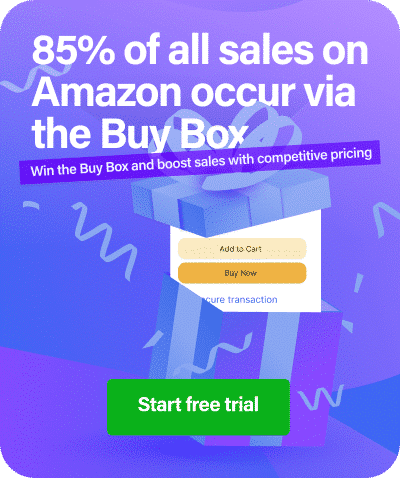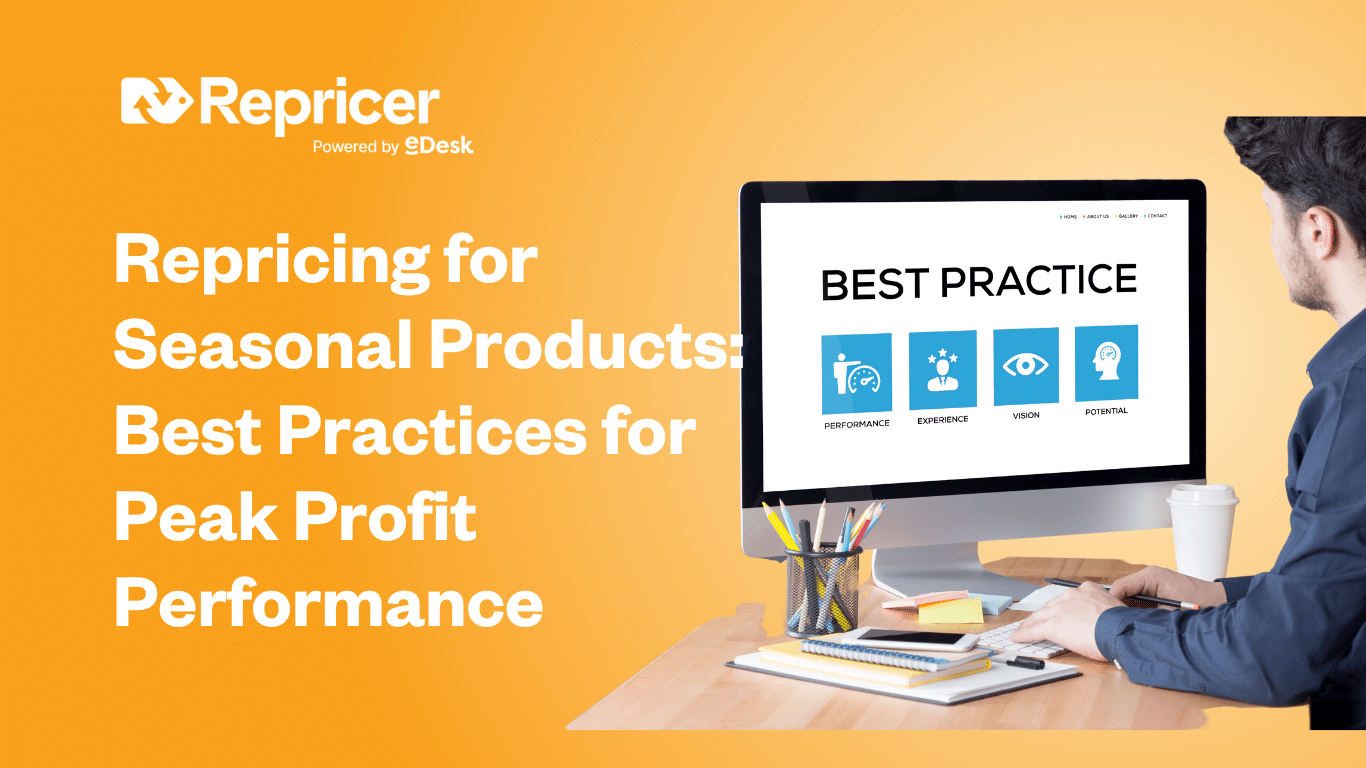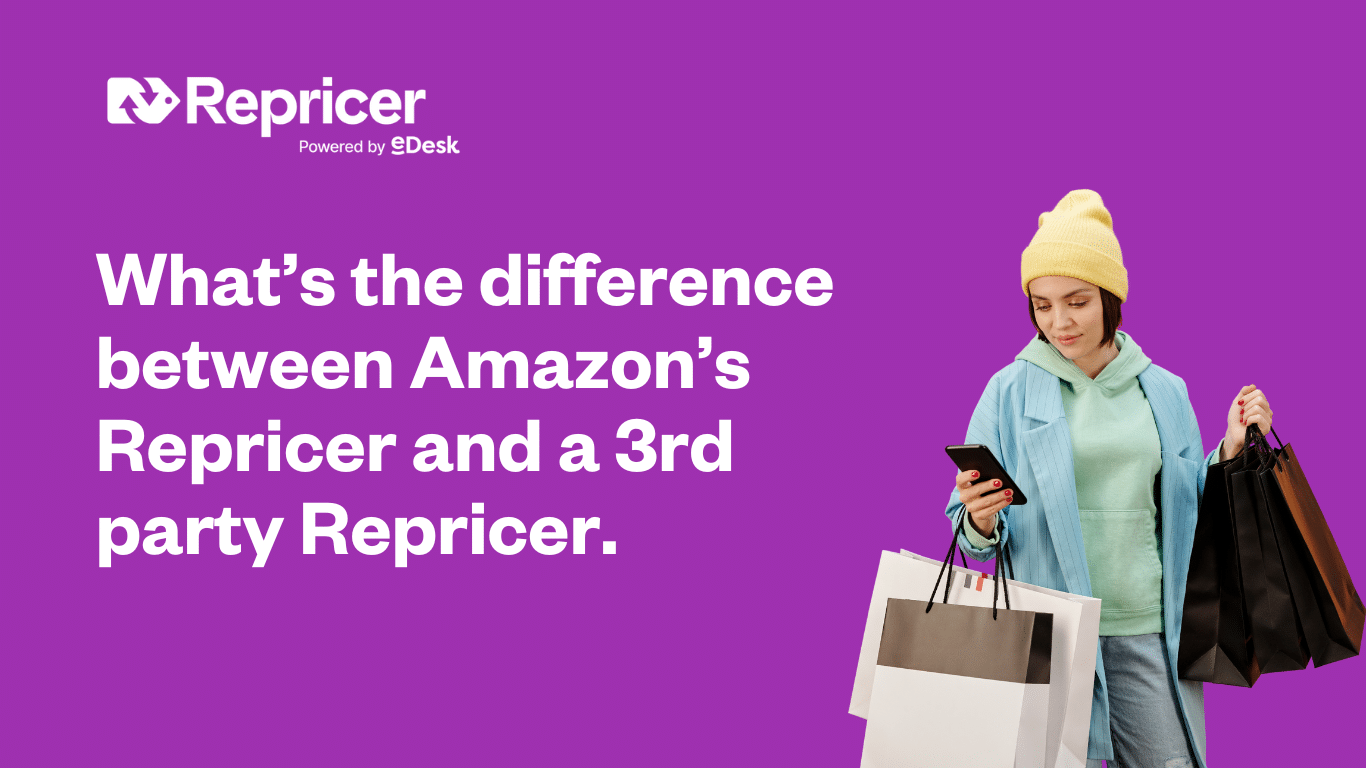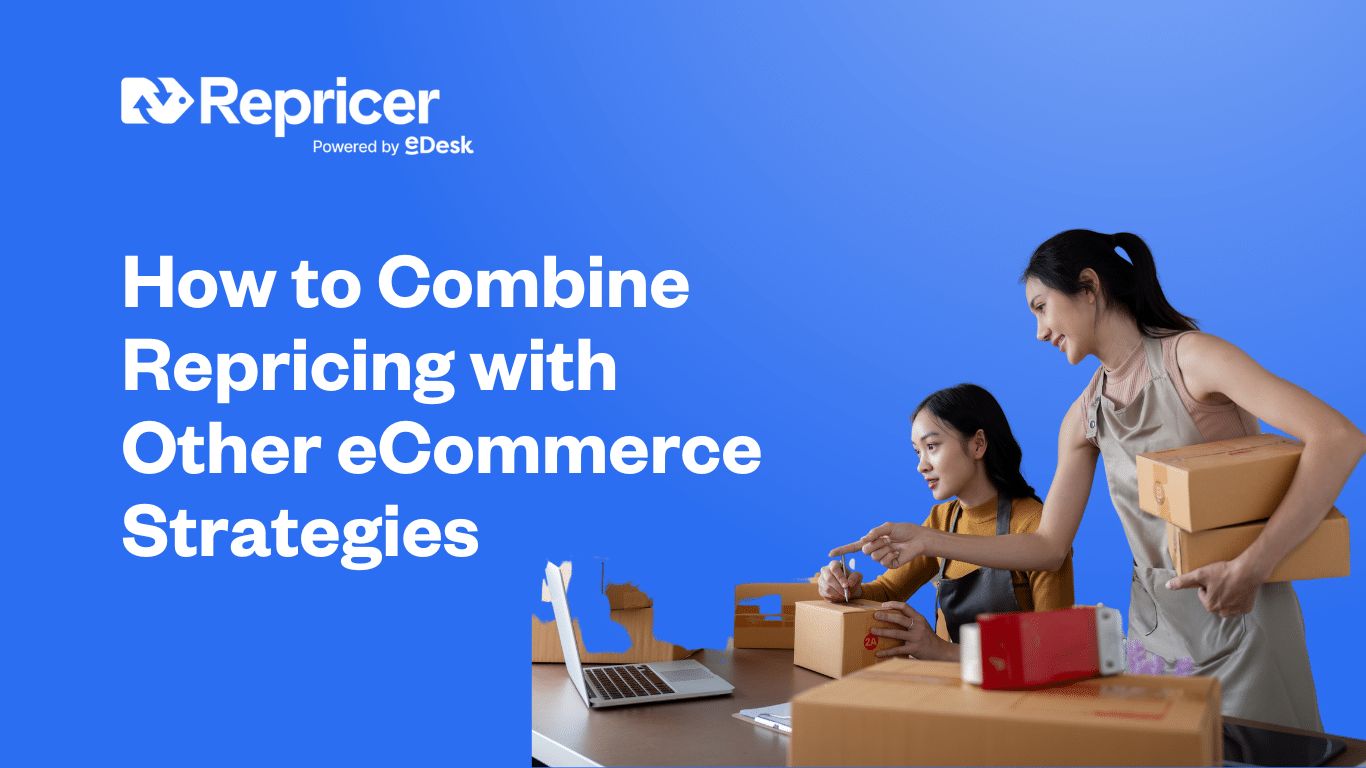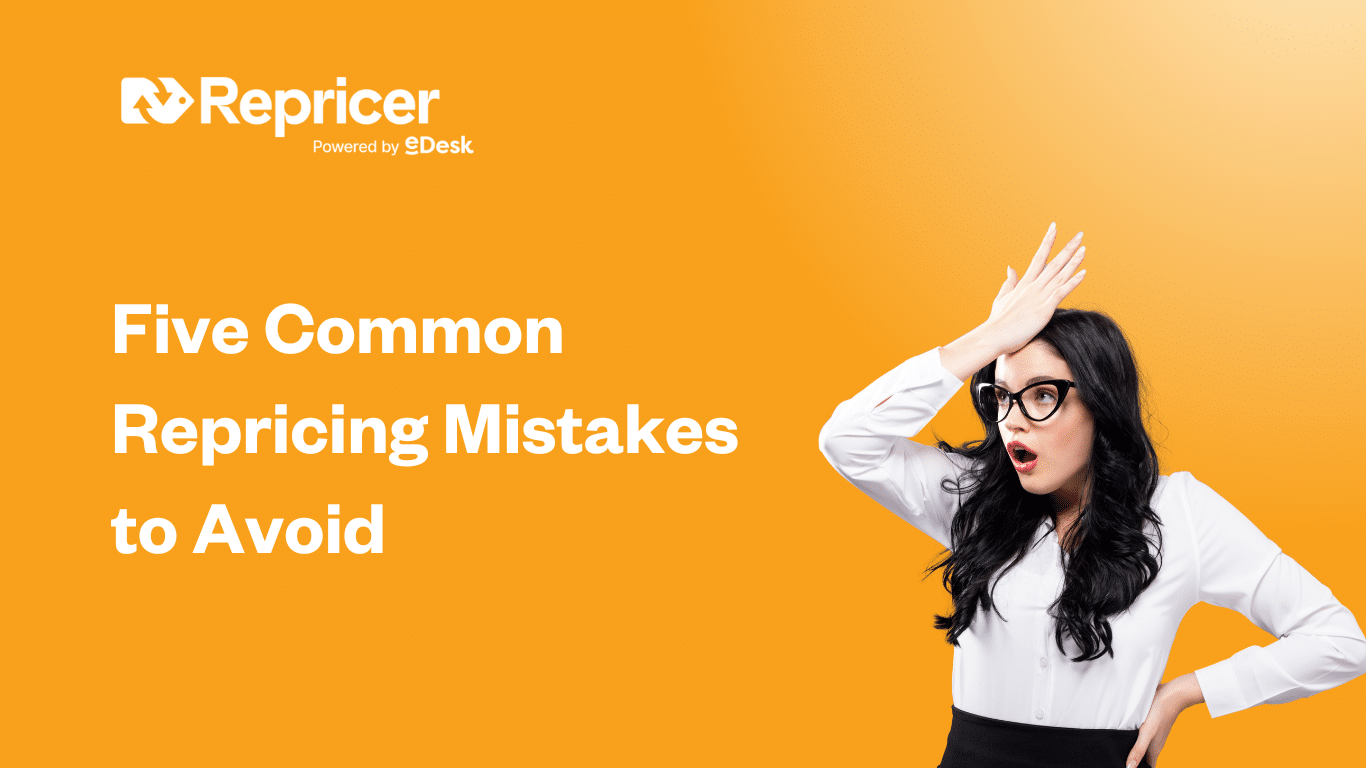Over the past 20 years eCommerce, like the internet more widely, has become ever more centralized. When I started to sell online it was absolutely essential to sell on Amazon. Today, the world is changing, and now expanding your presence beyond Amazon is not only advisable but crucial for the long-term growth and sustainability of your business.
By venturing beyond Amazon, you will gain control over your brand, build direct relationships with customers, and reduce dependency on Jeff Bezos’ brainchild. Whether you’re diversifying your marketplace presence or setting up your own, let us map out the opportunities that await!
Why Everyone Seems to Sell on Amazon
Let’s kick this off by reflecting on Amazon and why everyone seems to be selling there. It would be a bit reductive to say it’s because they’re the biggest marketplace. Even if that’s true, it’s far from the whole story.
Trust and Reliability
As multinational companies go, trust is often a hard thing to find. Amazon on the other hand has managed to foster a strong reputation for trust and reliability among its users. Continually over the past 2 decades, Amazon has pushed the envelope on speed, setting new benchmarks for online stores worldwide. Their reputation for excellent customer service is next to none and easy-to-see feedback on third-party sellers fosters trust, even when you’re not buying from Amazon themselves.
Diverse Product Categories
If you want to buy it, you’ll probably find it on Amazon. By leveraging the inventories of over 2 million third-party sellers, Amazon can offer an unbeatable range of products while taking a cut of every sale. Whether you’re selling electronics, fashion, home goods, or niche products, Amazon provides a platform to reach interested customers.
Global Reach
With 22 global stores (soon to be 23 with amazon.ie launching soon!) Amazon provides sellers with the opportunity to reach a global market. With an international presence, you can tap into new markets and reach new buyers, contributing to increased sales and growth potential.
Customer base
And of course, I had to bring up the elephant in the room. Amazon is by far the world’s largest marketplace with millions of active users. In 2023 alone, Amazon’s total sales reached approximately $574 billion, a figure they are expected to surpass in 2024 despite sluggish global growth.
The Large Alternatives to Consider
Now that we have discussed Amazon, let’s start thinking about the alternatives. Who are the other big players you should consider selling on to offer your goods to as many buyers as possible? Let’s take a look!
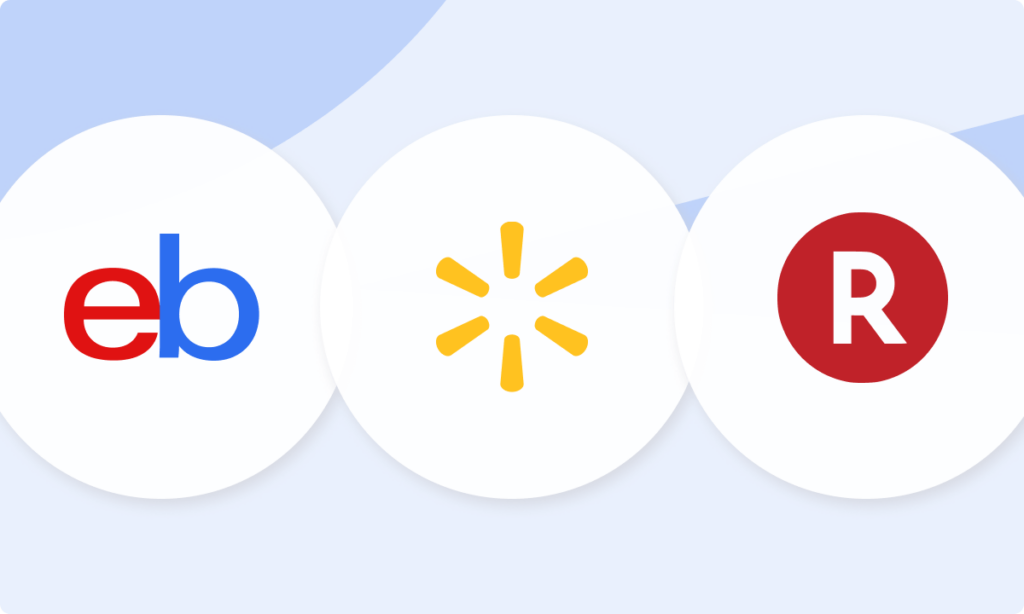
eBay
Of course, eBay is at the top of our list as the original marketplace competitor. So, what are the reasons to expand to eBay?
- Global Reach: eBay has by far the most marketplaces with over 190 worldwide, providing access to a vast international audience.
- Auction and Fixed-Price Options: Sellers can choose between auction-style listings and fixed-price listings, this provides flexibility in sales strategies.
- Seller-Friendly Policies: eBay’s policies are often more flexible, especially concerning fees and listing rules, which can be beneficial for small and medium-sized sellers.
In short, eBay is a well-established marketplace with a strong global presence with a broad audience. It’s a great alternative to selling on Amazon you could tap into today.
Walmart
Walmart is not only the largest brick-and-mortar retailer in the world, but it also has a popular marketplace with a 6% market share in the US alone. Let’s take a look at what sets Walmart apart,
- Fast growing: Walmart is one of the fastest growing marketplaces with an impressive 12% year-on-year growth.
- Large Customer Base: Walmart has leveraged their offline presence to get a head start but has also invested heavily in its online store. Millions of buyers now use Walmart.
- Multi-Channel Selling: Walmart’s integration of online and offline sales channels allows sellers to leverage its extensive network.
- Competitive Fees: Walmart offers competitive fee structures, often lower than Amazon’s, which can increase profit margins for sellers.
Everyone has heard of Walmart, and this strong brand recognition helps set it apart. Its high investment in growth makes it a great strategic choice for sellers aiming to expand their reach and sales. It certainly should be high on your list.
Rakuten
Rakuten may have been born in Japan but today they offer a global network of sites to rival Amazon and eBay. With popular sites in the US, UK, Europe and Asia, let’s look at why you should be looking at Rakuten.
- Customer Loyalty Programs: Rakuten’s Super Points program incentivizes repeat purchases, fostering strong customer loyalty and retention.
- Branding Opportunities: Sellers can create personalized storefronts, allowing for greater brand visibility and customer engagement.
- Diverse Product Categories: Rakuten also offers some of the most diverse product categories outside of Amazon.
Rakuten takes a unique approach to eCommerce, with a strong emphasis on customer loyalty and brand building. Its international growth and diverse product offerings make it an excellent platform for sellers looking to expand their reach and build a loyal customer base.
Up and Comers
As well as the well-established, several newer and fast-growing marketplaces should be on your radar. These up-and-coming platforms can help diversify your sales channels and tap into emerging markets. Let’s take a look at some of the most promising alternatives:
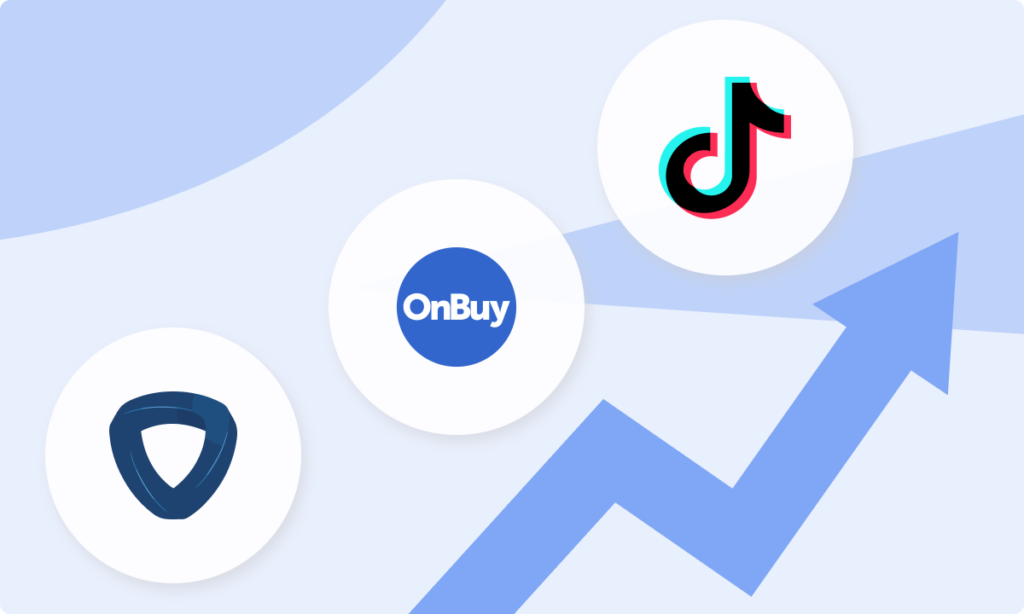
Mirakl
Mirakl is a unique marketplace as it’s more like 400 different marketplaces in one! Rather than offering a single marketplace, Mirakl offers a platform where brands can build their marketplace, which offers unique advantages to sellers. Let’s take a look.
- B2B and B2C Capabilities: Mirakl operates both business-to-business and business-to-consumer marketplaces, providing flexibility for different types of sellers.
- Rapid Growth: Mirakl has seen significant growth, with numerous retailers adopting its marketplace model to enhance their eCommerce offerings.
- Strong Partnerships: Mirakl partners with leading retailers and brands, increasing visibility and sales opportunities for sellers on its platform.
Mirakl is mixing things up in the marketplace world by enabling retailers to create their own marketplaces, offering sellers new avenues for growth and collaboration. Its rapid expansion and strong partnerships make it a promising platform for forward-thinking eCommerce businesses. The only question is, which of the 400 marketplaces they support will you consider?
OnBuy
If you are selling in the UK or Europe then OnBuy is an up-and-coming marketplace which has seen tremendous growth in recent years. How big? How does 3,402% since 2018 sound? If that’s not enough of a reason to jump on board, let’s take a look at what else they have on their side.
- Seller-Friendly Policies: OnBuy offers competitive fees and supports fair trading practices, making it an attractive platform for sellers.
- Transparent Business Model: Unlike some other marketplaces, OnBuy does not compete with its sellers, focusing solely on providing a platform for third-party sales.
- Expanding Product Categories: OnBuy is continually expanding its product categories, attracting a diverse range of buyers and sellers.
OnBuy’s rapid growth and commitment to fair trading practices make it an appealing alternative for sellers looking to expand their online presence. Its transparent business model and focus on supporting third-party sellers create a favorable environment for eCommerce businesses to thrive.
TikTok
TikTok, like many social media platforms, is pivoting towards eCommerce. With 1.1 billion active users it’s a perfect place to tap into a younger demographic. Let’s take a look at why TikTok is more than just dance crazes.
- Engage with your buyers: TikTok is an engagement platform first. This means you won’t be just posting your products and waiting for buyers. Posting videos, shorts and marketing materials is vital.
- Build your own store: Build your own TikTok store so TikTokers can browse and buy your products directly from their app.
- TikTok Ads: Directly market your products against videos featuring them or partnering with influencers to get them in front of millions of eyeballs.
- Reach a different audience: TikTok holds unique opportunities with buyers you won’t find as easily on other platforms.
Going It Alone
We’ve talked a lot about marketplaces, but how about taking things in another direction? Selling on your own website offers its own unique advantages and better yet, is easier than ever to do alongside marketplace selling. Let’s take a look at some of the key benefits of going it alone and establishing your own online store.
Control your own Brand
When you have your own store, it means you have the ability to take control of your own brand. Presentation is important and—with your own online store—you have full control over the design of your store including layouts, colors, fonts, and imagery. This level of customization helps create a strong, recognizable brand presence that stands out in the crowded online marketplace.
Direct Customer Relationships
Amazon and other marketplaces are doing everything they can to stop sellers from talking to buyers unless there is a problem. With your own store, you can build your own direct relationships with customers. You can collect and analyze customer data to gain insights into their preferences, behaviors, and purchasing patterns. Use this information to tailor your marketing efforts, improve customer service, and develop more effective loyalty programs. Direct interaction also enables you to provide a personalized shopping experience, which can lead to increased customer satisfaction and loyalty.
Higher Profit Margins
Amazon takes a cut, and with already thin margins, that can make a huge difference to the bottom line. By selling on your own online store you can achieve far higher profit margins since you avoid these fees and commissions. While there are costs associated with setting up and maintaining your store, such as hosting fees and payment processing charges, these are generally lower than the fees associated with selling on platforms like Amazon. That means more money in your pocket!
Potential for Better SEO and Organic Traffic
With your own online store, you have full control over your search engine optimization (SEO) strategy. By optimizing your site for search engines, you can attract organic traffic and reduce reliance on paid advertising. Creating valuable content, such as blog posts, videos, and product guides, can also enhance your store’s visibility and authority, driving more traffic and sales.
Variety of Providers
There are numerous eCommerce website providers that make it easy to set up and manage your own online store. Platforms like Shopify, BigCommerce and WooCommerce offer robust tools and features to help you build a professional-looking store with minimal technical expertise.
- Shopify: Known for its ease of use, Shopify provides an all-in-one solution with a variety of templates, apps, and built-in features. It’s a great option for those who want a straightforward, hassle-free setup.
- BigCommerce: This platform is designed for scalability and offers advanced features for growing businesses. BigCommerce provides a range of tools to help you manage your store, optimize performance, and expand your reach.
- WooCommerce: Ideal for WordPress users, WooCommerce is a flexible, open-source platform that integrates seamlessly with WordPress websites. It offers a wide range of plugins and themes to customize your store.
A New Fulfillment Era
One argument against going it alone used to be that inventory management can be time- and energy-consuming. But not any more. Now that dropshipping has entered the eCommerce space, you can skip physical stocking on your end entirely. If you go down this route, wholesalers and manufacturers can fulfill your customers’ orders directly. The suppliers above also provide this service, for added convenience.
Final Thoughts
There has never been a better time to take your business off Amazon. There are dozens of well-established marketplaces, far more than we have covered in this article which can help take your eCommerce business to the next level.

Better yet, Repricer will be with you every step of the way. Use our powerful Multichannel Repricer to automatically keep your prices between Amazon and your other online platforms in sync without lifting a finger.
If you’re interested in automating repricing on Amazon, eBay or Walmart consider starting a 14-day free trial of Repricer to optimize sales and minimize storage expenses.

